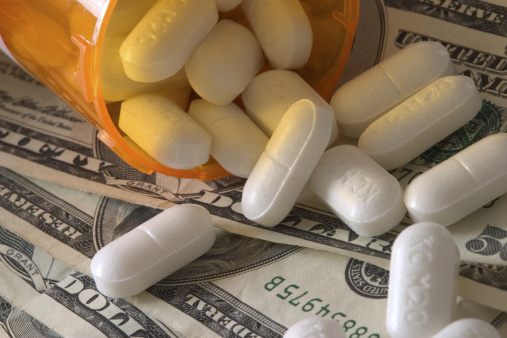Recent attention by the medical profession, Congress and the media has focused on the rising costs of new drugs, particularly for treatment of cancer and hepatitis C. This crisis is widespread, and is threatening any gains in healthcare savings in the U.S. and, more importantly, the health of patients who are unable to afford co-pays even when insured.
 As a physician who treats patients with diabetes, I have seen a disturbing trend in the cost for diabetes medications for several years.The Alliance of Community Health Plans (ACHP), which comprises 23 community-based, not-for-profit health plans nationwide, covering more than 18 million Americans, recently showed that spending on insulin and other diabetes medications is projected to rise at a rate 60 times greater than the income growth rate across all households..
As a physician who treats patients with diabetes, I have seen a disturbing trend in the cost for diabetes medications for several years.The Alliance of Community Health Plans (ACHP), which comprises 23 community-based, not-for-profit health plans nationwide, covering more than 18 million Americans, recently showed that spending on insulin and other diabetes medications is projected to rise at a rate 60 times greater than the income growth rate across all households..
And lest you think that these trends are due to the introduction of “new” drugs with high development costs, the greatest percentage rise, up more than 300 percent, is for Humulin—the first product of the revolution in recombinant DNA technology, which was introduced by Eli Lilly Co. in the early 1980s. Is it complicated to make? Well, the rDNA drug manufacturing process is essentially a bacterial fermentation process—think beer. NovoNordisk introduced its recombinant insulin, Novolin, in 1983, and its more “modest” price hike was “only” 167 percent. What’s going on?
Complexity and a Lack of Clarity in Pricing
The topic is complex and fraught with a remarkable lack of transparency from the industry, as reflected in a paper by Jerry Avorn, M.D. in the New England Journal of Medicine, “The $2.6 Billion Pill,” which challenges the data on costs of new drug development. Reading the piece makes one question whether research and development costs alone explain the soaring prices of prescription drugs in the U.S., which rose more than 12 percent last year.
Unhealthy Drug-Price Increases
In May, Bloomberg News reported the remarkable coincidence of the costs of supposedly competing diabetes drugs rising in lockstep, or what it calls “shadow pricing.” This term has roots in technical economic jargon, where it means that the prices of goods or services are not based on actual market exchanges. As quoted in the Bloomberg article, David Balto, an antitrust lawyer and former Federal Trade Commission policy director, says that a pattern of insulin makers matching their price increases “certainly indicates a market that isn’t competitively healthy.”
And, as my Montefiore colleague Joel Zonszein, M.D., also quoted in that article, notes, co-payments have risen to as much as $50 a month from $5 or $10 five years ago. That means that as a physician I can’t even hide behind the façade of believing that my patients’ insurance will “cover” these exorbitant costs. For example, the wholesale U.S. price for a five-pen pack of Lantus insulin is almost $450, or about $375 with a health-plan discount. Maybe I should just tell my patients to move to France, where the same amount of this drug costs about $70.
Cutting and Coping by Patients
What are U.S. patients doing now? Well, a new Consumer Reports survey found that 75 percent of Americans “say they have been forced to cut back in their spending, including food, in order to afford their medications.”
While patients most often blame big pharma for price increases, the industry points a finger at insurance companies for limiting drug coverage, and it’s been well known for years Congress has been unwilling to authorize Medicare to negotiate drug prices. But the pressure is mounting, and I’d like to believe that the voice of physicians has mattered in this controversy. As a result of the outrage expressed by doctors, there are now several strong advocates for pricing controls in both the House and the Senate.
One conservative columnist argues that “today’s high-cost designer treatments will be tomorrow’s $4 generics at Walmart, but only if Congress will lay off and let drug companies make the money now to invest in other new drugs then.”
While such a market-driven future would be welcome, the problem is that we’re not talking about just “designer” drugs of the future. We’re talking about drugs whose costs have been paid for and whose benefits are needed by real people right now. The Bottom Line: patients should not be paying inflated prices for drugs they desperately need.

